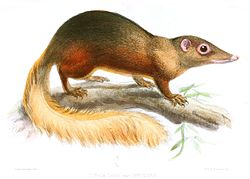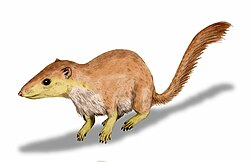| Anagale Temporal range: Early Oligocene | |
|---|---|
 | |
| Restoration of A. gobiensis | |
| Scientific classification | |
| Kingdom: | Animalia |
| Phylum: | Chordata |
| Class: | Mammalia |
| Order: | † Anagaloidea |
| Family: | † Anagalidae |
| Genus: | † Anagale Simpson, 1931 |
| Species: | †A. gobiensis |
| Binomial name | |
| †Anagale gobiensis Simpson, 1931 | |
Anagale is an extinct genus of mammal from the Early Oligocene of Mongolia. Its closest living relatives are the rodents and lagomorphs.



